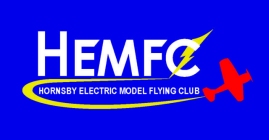

 |
 |
|
|
Finding the Centre of Gravityby Mark Frasca, © September 2009This is a short article to explain how to find the CG (centre of gravity) of your model. Many of us over the years have purchased that bargain on eBay or from a mate. Although it was a bargain at the time, we didn’t get the manual or plans that describe the CG location. Not to worry, I’ll explain how to come up with an approximation to finding it. Most club models are conventional in configuration and have rectangular or tapered wings so this method works well. If you have another planform, such as cranked wing or a canard then you need to alter the method. By using a pencil, trace your wing planform onto a piece of paper. You could do this full size or scale it down. You only need to work on one wing half for this method. Using the root and tip chords “A” and “B” respectively, mark out the diagram as shown below. Where the dotted lines intersect will be your mean aerodynamic chord location. The chord is just another name for airfoil section on the wing. The mean aerodynamic chord (MAC) can be thought as the equivalent chord if your wing was converted into a straight rectangular section.
Now we have located the mean aerodynamic chord, we can now find a suitable CG location. As a general rule of thumb, the CG should not pass beyond 30% of the MAC, that is the distance from the leading edge to the CG is 30% of the MAC length. Beyond this point, the model may display unstable characteristics such as violent pitch up with small elevator inputs or wind gusts. In fact some aerobatic aircraft deliberately position themselves with an aft CG to get the fancy manoeuvres we so often see. The figure below illustrates various positions on the MAC and its effect on pitch stability.
Start with a CG which is at 20% MAC. Fly the model and see how it behaves. If it requires excessive up elevator trim, then shift the CG back to 22% MAC. Repeat this process until you have the model flying the way you want. I normally make my CG at 25% MAC to be on the safe side. In reality, the problem of determining CG is more complex than this but for standard model configurations this method is adequate. | ||
| © Copyright 2017 Gary Hoggard. | WebMaster: Tom Pecar |